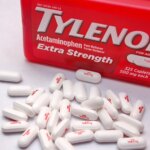- Techniques to Build Muscle Through Resistance Training Without Weights
- Importance of Nutrition and Protein Intake
- Enhancing Muscle Growth with Bodyweight Exercises
- The Role of Metabolism and Insulin Sensitivity
- Utilizing Technology and Tools for Muscle Development
Muscle building often evokes images of heavy weights, strenuous workouts, and intense gym sessions. However, creating muscle without traditional weightlifting is entirely feasible by implementing alternative methods. This article will explore various techniques and provide insights into how you can effectively build muscle without lifting weights.
Resistance training remains a foundational approach for building muscle, even when you are not using conventional weights. Resistance bands, for instance, can create significant tension in muscles without the need for dumbbells or barbells. Bands offer adjustable resistance levels and allow for a wide variety of exercises. Exercises such as resistance band squats, shoulder presses, and rows can engage major muscle groups effectively.
Bodyweight exercises also present a powerful method to develop muscle without weights. Movements like push-ups, pull-ups, squats, and lunges utilize your body’s mass as resistance. These exercises can be modified to increase difficulty or target specific muscles. For instance, one can perform elevated push-ups or pistol squats to challenge muscle endurance and strength.
Another innovation in building muscle is the use of advanced fitness technology. Devices such as electrical muscle stimulation (EMS) units can augment muscle contractions without heavy lifting. These units deliver electrical impulses to muscles, mimicking natural contractions during physical activities. While EMS cannot replace traditional training entirely, it can serve as a supplementary method. Studies have shown that integrating EMS with regular workouts can enhance muscle activation, ultimately contributing to muscle growth.
Diet plays a crucial role in any muscle-building regime. Consuming adequate protein is essential for muscle repair and growth. Foods rich in protein, such as lean meats, dairy products, legumes, and nuts, should be prioritized. Not only should you focus on protein intake, but also consider the timing of meals. Consuming protein shortly after workouts can promote muscle recovery and stimulate growth.
In addition to protein, understanding the role of overall nutrition is important for optimizing muscle development. Carbohydrates serve as a primary energy source, allowing you to maintain the energy needed for workouts. Healthy fats should also be included, as they contribute to hormone production crucial for muscle growth and recovery. Balancing macronutrients—proteins, carbohydrates, and fats—will support your muscular development without the need for weights.
Another critical element in muscle building is metabolism and insulin sensitivity. These factors can greatly influence how muscle is built and maintained. Insulin is a hormone that helps cells absorb glucose and not only provides energy but also promotes the uptake of amino acids into muscle cells. Maintaining good insulin sensitivity is vital for efficient nutrient use, which augments muscle recovery and growth.
To facilitate insulin sensitivity, include complex carbohydrates and fiber in your diet. Foods such as whole grains, vegetables, and legumes help stabilize blood sugar levels. This dietary approach not only supports metabolic health but also creates a more conducive environment for muscle growth.
Consistency in practice is a foundational aspect as well. Whether utilizing resistance bands, bodyweight exercises, or EMS, establishing a regular routine will yield the best results. Ensuring that your muscles are adequately challenged on a regular basis will facilitate continued adaptation and growth.
Sleep and recovery are also paramount. Muscles require time to repair after stress and strains, and this is primarily achieved during sleep. Aiming for 7-9 hours of quality sleep per night can significantly enhance recovery efficiency. Additionally, consider incorporating active recovery days into your routine to promote blood flow and reduce muscle soreness without the intensity of a gym workout.
Engaging in activities that require physical exertion can also support muscle growth. Dance, hiking, or sports can serve as practical ways to challenge muscle groups without the conventional weightlifting approach. Finding enjoyable activities will not only keep you engaged but can also lead to improved muscle development and overall fitness.
Exploring more advanced techniques can further provide variety in your regimen. For instance, plyometric exercises such as jump squats and box jumps can add intensity. These movements work on explosiveness and can help develop power in muscles effectively.
In summary, building muscle without lifting weights is entirely attainable through various strategies that focus on resistance training, proper nutrition, and recovery. Resistance bands, bodyweight exercises, EMS technology, and a well-rounded diet focusing on macronutrient balance all contribute significantly to muscle development. Understanding the role of metabolism and implementing a consistent routine further enhances these efforts. These approaches allow individuals to engage in muscle-building activities regardless of access to traditional gym equipment, offering a practical alternative for those interested in fitness.
*****
Source Description
Your workouts may be doing less than you think, and science now proves why. This episode reveals how to build muscle, improve metabolism, and extend longevity in a fraction of the time using blood flow restriction training and intermittent hypoxia. You’ll learn how to hack your mitochondria for faster recovery, stronger hormonal balance, and better brain performance without the burnout of high-intensity training.
Listen to the FULL-LENGTH version of this episode on your favorite audio platform:
-Apple: https://podcasts.apple.com/us/podcast/the-human-upgrade-biohacking-for-longevity-performance/id451295014
-Spotify: https://open.spotify.com/show/2mkB9OoukPVKCTKSuAIgCq
Host Dave Asprey talks with Dr. Sten Stray-Gundersen, PhD, CSCS, one of the world’s leading experts on blood flow restriction (BFR) training and metabolic physiology. With over a decade of research and teaching experience, Dr. Stray-Gundersen has explored how BFR and intermittent hypoxia can improve cardiovascular health, metabolism, and recovery. After earning his doctorate in Exercise Physiology from the University of Texas at Austin, he now serves as an Assistant Professor at the University of South Carolina, where he studies vascular adaptations, cognitive performance, and ergogenic aids. He’s also a B Strong master trainer, developing individualized BFR protocols for athletes, military professionals, and everyday people looking to optimize human performance.
Together, Dave and Sten uncover how BFR and oxygen cycling unlock powerful adaptations in the body’s vascular, metabolic, and hormonal systems. You’ll learn how strategic stress signals can trigger nitric oxide production, enhance glucose uptake, improve insulin sensitivity, and supercharge mitochondria for better energy and anti-aging benefits. They also explore how these methods can naturally boost testosterone, growth hormone, and even libido, all while protecting the nervous system and improving recovery.
You’ll Learn:
• How intermittent hypoxia works at the level of partial pressure and why altitude acclimation upgrades mitochondria and performance
• Why hypoxia and muscle contraction increase glucose uptake independent of insulin and improve insulin sensitivity
• How blood flow restriction (BFR) accelerates fatigue with light loads to drive hypertrophy, strength, and vascular adaptations
• How BFR and hypoxia influence testosterone, growth hormone, nitric oxide, and libido through short, targeted stress
• The roles of ENOS, INOS, and NNOS in nitric oxide signaling and what that means for circulation and brain perfusion
• Who benefits most from BFR, including athletes, rehab patients, and older adults who cannot lift heavy
• How to stack BFR with Zone 2, REHIT, and vibration plates for VO2 max, muscle, and time efficiency
Thank you to our sponsors!
-KILLSwitch | If you’re ready for the best sleep of your life, order now at https://www.switchsupplements.com/ and use code DAVE for 20% off.
-EMR-Tek | https://www.emr-tek.com/DAVE and use code DAVE for 40% off.
-Leela Quantum Tech | Check out all HEAL360 products and research and get 10% off at https://leelaq.com/DAVE.
-ARMRA | Go to https://tryarmra.com/ and use the code DAVE to get 15% off your first order.
Timestamps:
0:00 – Trailer
1:25 – Guest Intro
5:40 – Intermittent Hypoxia & Altitude Acclimation
12:11 – Introduction to Blood Flow Restriction (BFR)
22:53 – Systemic Benefits & Who Can Use BFR
30:23 – BFR Effects on Hormones & Libido
40:37 – Nitric Oxide & Vascular Health
48:15 – Zone 2 Training with BFR
54:00 – Advanced Protocols: Stacking BFR
59:15 – Cognitive Enhancement & Wrap-Up
Resources:
• Use code DAVE10 to get a discount on a BFR band today: https://shopify.bstrong.training/products/b-strong-training-system?ref=dave%2F
• Dive deeper in Sten’s work at: https://bstrong.training/
Website: https://daveasprey.com
TikTok: https://www.tiktok.com/@daveaspreyofficial
Instagram: https://www.instagram.com/dave.asprey/
Facebook: https://www.facebook.com/Daveaspreyofficial/
X: https://x.com/daveasprey
YouTube: https://www.youtube.com/c/daveaspreybpr
The Human Upgrade Podcast: https://www.instagram.com/TheHumanUpgradePodcast/ https://m.facebook.com/Thehumanupgrade/
Danger Coffee: https://dangercoffee.com/DAVE15
Dave Asprey’s BEYOND Conference: https://beyondconference.com/
Dave Asprey’s New Book – Heavily Meditated: https://daveasprey.com/heavily-meditated/
Dave’s favorite supplements: https://www.shopsuppgradelabs.com/discount/DAVE15
Upgrade Collective: https://www.ourupgradecollective.com
Upgrade Labs: https://upgradelabs.com
40 Years of Zen: https://40yearsofzen.com


